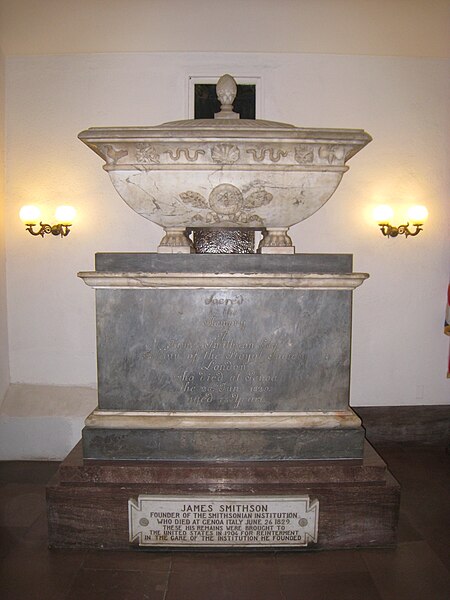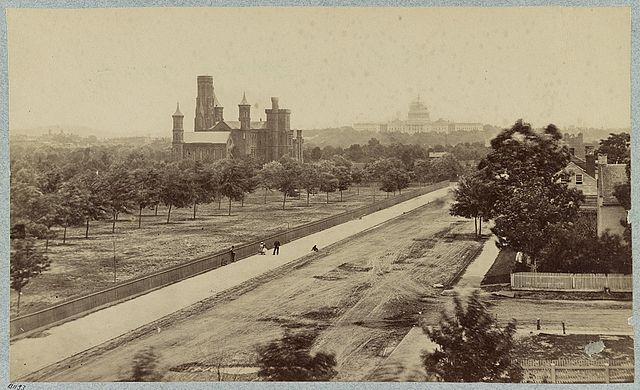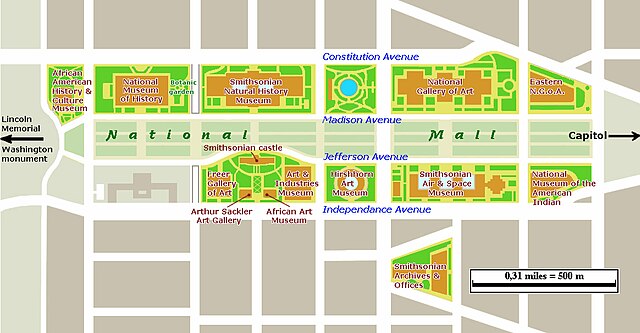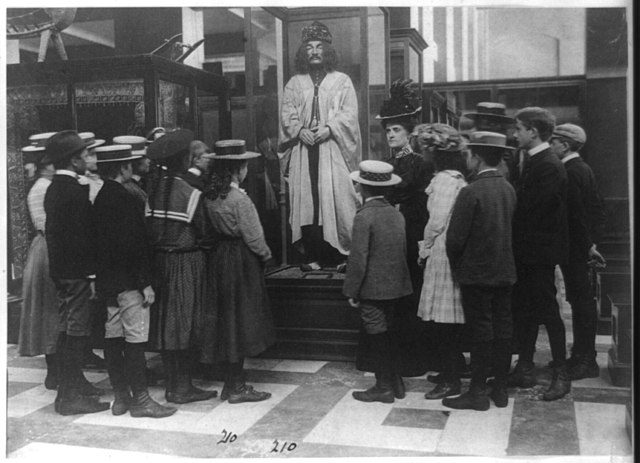James Smithson was a British chemist and mineralogist. He published numerous scientific papers for the Royal Society during the early 1800s as well as defining calamine, which would eventually be renamed after him as "smithsonite". He was the founding donor of the Smithsonian Institution, which also bears his name.
James Smithson by Henri-Joseph Johns, 1816
A young James Louis Macie, dressed in Oxford regalia, by James Roberts, c. 1786
Smithsonite, which was named after Smithson
Smithson's crypt in Washington
The Smithsonian Institution, or simply the Smithsonian, is a group of museums, education and research centers, the largest such complex in the world, created by the U.S. government "for the increase and diffusion of knowledge." Founded on August 10, 1846, it operates as a trust instrumentality and is not formally a part of any of the three branches of the federal government. The institution is named after its founding donor, British scientist James Smithson. It was originally organized as the United States National Museum, but that name ceased to exist administratively in 1967.
The Castle in April 1865
"The Castle" (built, 1847) on the National Mall: the institution's earliest building remains its headquarters.
The Smithsonian Institution area around the National Mall.
A school field trip to the Smithsonian Institution, c. 1900








